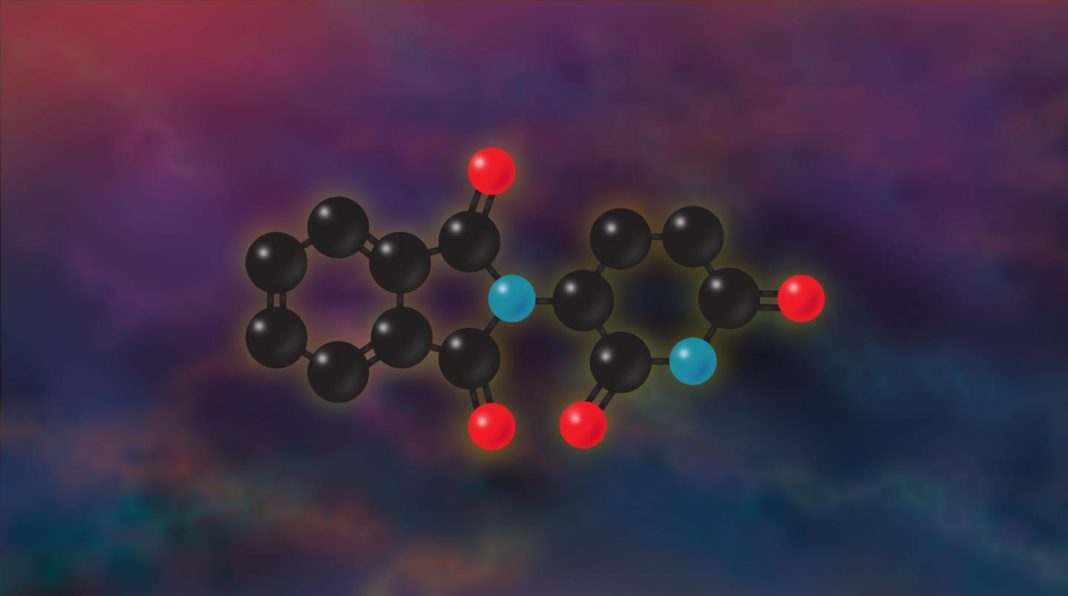Thalidomide’s harms, though well documented, have never been completely understood at the molecular level. Now, more than 60 years after thalidomide caused birth defects in thousands of children whose mothers took the drug while pregnant, scientists based at the Dana-Farber Cancer Institute have finally solved the molecular mystery. According to these scientists, thalidomide acts by promoting the degradation of a transcription factor called SALL4.
Actually, thalidomide causes the degradation of a surprisingly wide range of transcription factors, which are cell proteins that help switch genes on or off. But SALL4 is of special interest because it is also implicated in Duane Ray Syndrome. Specifically, SALL4 is mutated in Duane Ray Syndrome, which is evident in newborns and is characterized by missing thumbs, underdeveloped limbs, eye and ear defects, and congenital heart disease—problems that mirror those in children exposed to thalidomide in the womb.
“The similarities between the birth defects associated with thalidomide and those in people with a mutated SALL4 gene are striking,” says, Eric Fischer, Ph.D., a researcher at Dana-Farber. “They make the case even more strongly that disruption of SALL4 is at the root of the devastation produced by thalidomide in the 1950s.”
Dr. Fisher is the senior author of an article (“Thalidomide promotes degradation of SALL4, a transcription factor implicated in Duane Radial Ray Syndrome”) that appeared August 1 in the journal eLife. The article presents findings that are bound to mark an important inflection point in the history of thalidomide. Long a cautionary tale about the potential harms of new drugs, thalidomide has more recently come to be valued as an anticancer drug. Now that thalidomide’s effects on transcription factors are being uncovered, the drug may guide drug discovery efforts of benefit to cancer patients.
“Here we show that thalidomide and related immunomodulatory drugs disrupt a broad transcriptional network through induced degradation of several C2H2 zinc finger transcription factors, including SALL4, a member of the spalt-like family of developmental transcription factors,” wrote the authors of the eLife study. “Strikingly, heterozygous loss of function mutations in SALL4 result in a human developmental condition that phenocopies thalidomide-induced birth defects such as the absence of thumbs, phocomelia, defects in ear and eye development, and congenital heart disease.”
Knowing the mechanism by which thalidomide produces birth defects will be critical as drug developers devise and test new drugs that use the same structural “scaffold” as thalidomide.
“As new derivatives are tested, we'll be able to explore whether they have the same potentially damaging effects as thalidomide,” Dr. Fisher explained. “We know that the therapeutic effect of these drugs is based on their ability to degrade specific proteins. Our findings will help drug developers distinguish between proteins whose degradation is likely to be beneficial and whose may be harmful.”
Marketed and sold extensively in Europe, Australia, and some South American countries—though never approved in the U.S.—as a treatment for pregnancy-related morning sickness, it became a source of anguish when it became clear that it was responsible for birth defects in more than 10,000 children and an unknown number of miscarriages. The medical community was slow to discover the danger of thalidomide because the drug gave rise to birth defects only when taken between the fourth and eighth weeks of pregnancy. It was officially banned in 1961.
In the 1980s, thalidomide gained a second life when it was found to be a powerful anti-angiogenic drug, inhibiting the growth of blood vessels in tumors. As such, it has come into wide use as a cancer drug, primarily in the treatment of multiple myeloma.


